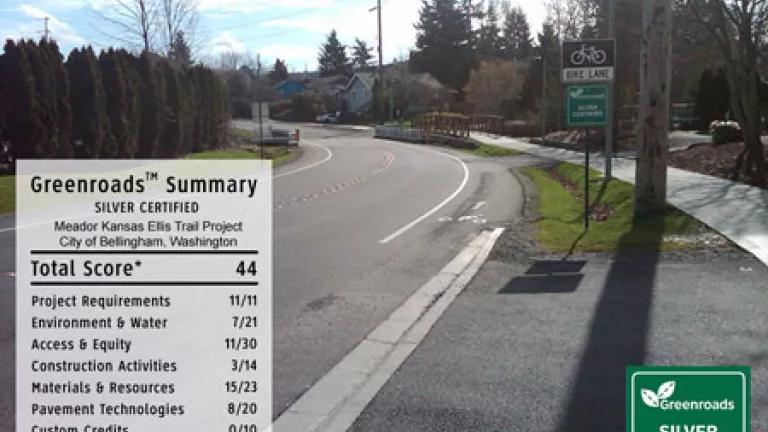
The building industry has gone through a revolution since the 1990s. More and more structures are greener than in the past, with measurably better environmental performance yielding less air and water pollution as well as reduced waste. What accounts for this progress?
The obvious answer to this question is policy. In fact, cities, states and federal agencies often require that structures be certified as green. The green building industry has matured to the point that there are even dueling templates available for jurisdictions to adopt as their standard for greenness.
And this impressive infographic from what is far-and-away the certification system leader -- the U.S. Green Building Council or USGBC - underscores the industry's steep growth curve and some of the factors behind it. By the way, NRDC helped launch USGBC, with my former colleague Rob Watson playing a pivotal role in its take-off (for a very personal account of the start-up, read this). There are now more than 50,000 green-building-council certified commercial projects worldwide, and 34,000 homes as well.
What about the ribbons of roads tying these structures together? There's a lot of room for environmental improvement here, and the benefits would be huge. According the Federal Highway Administration, we have more than 4 million miles of roads in the U.S. While new construction has slowed since the turn of the millennium, an industry estimate finds we still added 31,813 lane-miles of new roads to the system annually from 2000-2012.That's a lot of pavement, and we're likely to add a whole lot more in years to come.
If the roadbuilding is analogous to structures we live and work in, then the first step towards better environmental performance is settling on what "greenness" is. Increasingly the go-to tool for this is third-party certification. That's why I recently joined the board of a young organization that sets the bar for this industry --- Greenroads, a third-party certifier recognized as a "Champion of Change" by the White House a couple of years ago. Like USGBC and other certifiers Greendroads is credible in part because it's driven by a variety of technical experts who don't provide funding for projects up for certification, which is a potential conflict of interest.
In addition to third-party status, you need an analytically robust certification system. Greenroads offers that with a system modeled after USGBC's industry-leading "LEED" (Leadership in Energy and Environmental Design) product lines, with points allocated to different project characteristics in different categories. There are 11 project requirements and 37 voluntary credits project sponsors can apply for. Depending on point totals, projects are either not certified or receive bronze, silver, gold or evergreen awards.
Here's an example of a project rating from the state of Washington, where Greenroads originated (in fact the board president teaches at the University of Washington):
And here's a testimonial about Greenroads from an environmental policy director from the city of Tacoma (for more testimonials click here):
Greenroads is the nation's only third-party certification program, and one of only a few options for communities. I'm so impressed by the visionary Executive Director of the team and the robust scoring system that I've joined the board. Greenroads' toolkit sets performance requirements and credits high for projects and project developers seeking certification, which is crucial if the goal is market transformation.
As with USGBC, Greenroads certification will be iterated by the board and staff over time, getting better and better thanks to input from an increasing number of technical experts and fans. Recently the city of Austin joined Greenroads, and I look forward to helping scale it up further.
Please take a look, and spread the word!
